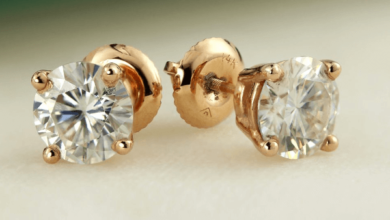What are the key techniques for successful show jumping?

Introduction
Show jumping is a popular and exhilarating equestrian sport that tests the horse’s agility and the rider’s skill. Success in show jumping requires a combination of precise training, strategic planning, and seamless teamwork between horse and rider. This article will delve into the key techniques for successful show jumping, providing valuable insights and tips to help riders of all levels improve their performance.
Understanding Show Jumping
What is Show Jumping?
Show jumping is a competitive equestrian event where horse and rider jump over a series of obstacles within a set time. The goal is to complete the course with the fewest faults, which can occur from knocking down obstacles, refusals, or exceeding the time limit.
History of Show Jumping
Show jumping has a rich history dating back to the early 20th century. It evolved from fox hunting and has since become a major sport worldwide, with events like the Olympics and World Equestrian Games.
The Importance of Technique in Show Jumping
Mastering the techniques of show jumping is crucial for success. It involves understanding both the physical and mental aspects of the sport, ensuring that horse and rider work harmoniously.
Key Techniques for Successful Show Jumping
1. Rider Position and Balance
Correct Riding Posture
Maintaining a proper riding posture is essential. The rider should be balanced, with weight evenly distributed, and hands steady but soft.
Importance of Core Strength
A strong core helps the rider maintain balance and control, especially during jumps.
2. Understanding Your Horse
Building a Bond with Your Horse
Developing trust and communication with your horse is fundamental. Spend time bonding through grooming and groundwork.
Recognizing Your Horse’s Strengths and Weaknesses
Every horse has unique abilities. Recognize and train according to your horse’s strengths and areas that need improvement.
3. Training Techniques
Flatwork and Dressage Basics
Good flatwork forms the foundation of successful jumping. Focus on transitions, collection, and extension.
Gymnastic Exercises
Incorporate gymnastics to improve the horse’s agility and jumping technique. Use exercises like bounce jumps and grids.
4. Course Strategy
Walking the Course
Always walk the course before riding it. Note the distances, types of jumps, and potential challenges.
Planning Your Approach
Develop a plan for each jump. Consider the best approach, take-off, and landing strategy.
5. Mental Preparation
Staying Calm and Focused
Mental toughness is key. Learn techniques to stay calm under pressure and maintain focus during competition.
Visualization Techniques
Visualize the course and your performance. This helps in mentally preparing for each jump and sequence.
6. Equipment and Gear
Choosing the Right Saddle and Bridle
The right equipment can make a significant difference. Ensure your saddle and bridle fit well and are comfortable for your horse.
Safety Gear
Always wear a helmet and consider using a body protector for added safety.
7. Jumping Techniques
Approach and Take-Off
Focus on a steady, rhythmic approach. The take-off should be balanced, with the horse pushing off evenly.
Over the Jump
Maintain a light seat and allow the horse to stretch over the jump. Keep your hands soft to avoid pulling on the reins.
Landing and Recovery
Ensure a smooth landing by maintaining balance and preparing for the next jump immediately.
Common Challenges in Show Jumping and How to Overcome Them
Dealing with Refusals
Understand the reasons behind refusals, whether they stem from fear, pain, or confusion, and address them through training.
Handling Nerves and Anxiety
Develop routines and techniques to manage nerves, such as deep breathing and positive visualization.
Improving Timing and Rhythm
Practice exercises that enhance your sense of timing and rhythm, like riding to a metronome or music.
Advanced Techniques for Competitive Edge
Tackling Complex Courses
Learn to navigate more challenging courses with tight turns and combinations by improving your horse’s responsiveness and agility.
Maximizing Speed without Sacrificing Control
Balance speed and control by practicing quick, efficient jumps while maintaining precision.
Nutrition and Fitness for Horse and Rider
Feeding Your Horse for Optimal Performance
Ensure your horse’s diet supports energy and health. Consult with a vet for a balanced nutrition plan.
Rider Fitness and Well-being
Riders should maintain their fitness through exercises that enhance strength, flexibility, and endurance.
Show Jumping Competitions
Preparing for Competitions
Prepare both mentally and physically for competitions. Ensure your horse is in peak condition and review your strategy.
What to Expect at a Competition
Understand the format, rules, and expectations of show jumping competitions to better prepare.
FAQs
What are the key techniques for successful show jumping? Key techniques include maintaining proper rider position, building a strong bond with your horse, incorporating flatwork and gymnastics into training, strategically planning your course, and preparing mentally.
How can I improve my horse’s jumping ability? Focus on regular, varied training that includes gymnastic exercises, flatwork, and ensuring your horse is physically fit and healthy.
What should I look for in a good show jumping horse? Look for a horse with good conformation, a willing attitude, and natural jumping ability. Experience and a good temperament are also crucial.
How important is rider fitness in show jumping? Rider fitness is very important. A fit rider can better maintain balance, control, and give clear aids to the horse.
What are some common mistakes to avoid in show jumping? Common mistakes include poor riding posture, rushing the jumps, failing to plan the course, and not addressing a horse’s refusals or fears properly.
How can I manage nerves before a competition? Manage nerves by practicing relaxation techniques, maintaining a positive mindset, and being well-prepared through thorough practice and planning.
Conclusion
Mastering show jumping requires dedication, skill, and a deep understanding of both horse and rider. By focusing on the key techniques outlined in this guide, riders can enhance their performance, build stronger bonds with their horses, and achieve success in this thrilling sport.



